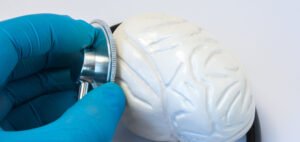Alternative medicine practice known as Homeopathy was established by Samuel Hahnemann during the late 18th century yet it continues to be a controversial yet enduring therapeutic approach. Homeopathy functions according to “like cures like” by using triggering substances from healthy subjects to treat similar symptoms of sick individuals thereby gaining widespread support but strong opposition. The worldwide growth of homeopathic practice proceeds steadily as education efforts spread awareness about its medical approach. The educational efforts play a critical role through their work of raising public understanding while clearing misconceptions and establishing smart dialogues about how homeopathy functions in modern medical care.
The Demand for Education in Homeopathy’s International Scene
Homeopathy finds different levels of recognition throughout the world. The Indian national health system has institutionalized homeopathy which serves millions of citizens as their primary or secondary medical therapy. The Indian government supports more than 200 homeopathic colleges along with thousands of practitioners through financial subsidies because homeopathy has established cultural and institutional value. Medical institutions in the United States as well as most parts of Western Europe show skepticism toward homeopathy because they lack empirical evidence which extends beyond placebo results. The inconsistent awareness about homeopathy represents the main difficulty because public understanding depends on either inaccurate information or minimal exposure to the practice.
The shortage of knowledge about homeopathy exists until educational campaigns step in to provide straightforward correct information for different groups of people. This educational initiative targets three distinct audiences starting from medical patients up to healthcare professionals and government representatives and ordinary citizens to explain the nature of homeopathy and its operational principles alongside its medical standing. Such approaches clarify both beneficial aspects and drawbacks of homeopathy through an international dialogue which enhances knowledge for all participants.
Building Awareness Through Public Outreach
Public education is perhaps the most potent instrument in broadening the reach of homeopathy. Campaigns are typically in the form of workshops, seminars, and internet sites that translate its basic tenets—such as individualized treatment and highly diluted remedies—into everyday language. For instance, groups such as the World Homeopathy Awareness Organization (WHAO) organize yearly activities such as World Homeopathy Day on April 10th, commemorating Hahnemann’s birthday with free clinics, lectures, and information pamphlets.
Involving Healthcare Professionals
While grassroots support is garnered through public outreach, involving medical professionals is equally important. Numerous doctors and scientists reject homeopathy because it differs from mainstream pharmacology, most notably in the use of dilutions so dilute that many contain no molecules of the initial substance that are traceable. Educational campaigns against this point up case studies, patient reports, and studies—though often limited in size or anecdotal—in which favorable outcomes are indicated.
In integrated healthcare countries like Germany and Switzerland, training for physicians and pharmacists incorporates homeopathy modules. Training stresses its use as a complementary therapy, not as a substitute for allopathic medicine. Educating professionals with information lessens opposition and stimulates cooperation. For example, a doctor can suggest homeopathy for chronic diseases like allergies, when allopathic medication does not work, thereby expanding its uses.
Harnessing Digital Platforms
With the digital era, internet campaigns have revolutionized awareness about homeopathy. Social networking sites, websites, and online courses enable activists to access global populations at any moment. Sites such as YouTube post videos on how to prepare remedies, and forums bring users together with practitioners for live guidance. The availability of these tools levels the playing field, educating individuals autonomously.
Yet, the digital age also perpetuates misinformation. Both critics and advocates fill the web with inconsistent accounts, so that it becomes difficult for the ordinary individual to distinguish fact from opinion. Counter to this are well-organized education campaigns, which emphasize openness—acknowledging scientific criticisms and offering homeopathy’s past and claimed virtues. Legitimate groups, including the National Center for Homeopathy, carefully filter evidence-based materials to ensure credibility, so awareness expands on the basis of trust.
Overcoming Challenges
Educational campaigns encounter major challenges. Skepticism on the part of the scientific community, along with regulatory actions in some nations (e.g., the FDA warnings on homeopathic products in the U.S.), can erode public trust. Campaigns need to get around these conflicts by promoting informed choice over dogmatic advocacy. They highlight that homeopathy is not a uniform solution but an instrument that, for some individuals, augments conventional care.
Funding is another obstacle. Unlike pharmaceutical giants, homeopathy lacks the financial muscle to launch large-scale initiatives. Grassroots efforts and donations often sustain these campaigns, limiting their scope. Yet, their persistence reflects a dedicated community unwilling to let homeopathy fade into obscurity.
The Future of Homeopathy Awareness
As global health moves forward, awareness campaigns will be central to homeopathy’s course. By spurring discussion, they promote exploration of its working—perhaps eventually closing the divide with conventional science. They enable people to exercise informed health choice, consistent with the trend towards individualized treatment.
Finally, the job of educational campaigns is not to convert doubters or muffle critics but to make homeopathy understood, not dismissed. Whether it flourishes as a broadly practiced art or stays a niche alternative, its worldwide presence has much to do with the endless work of those who teach, share, and listen. In a world that craves variety in healing, these campaigns keep the dialogue alive, one enlightened mind at a time.




